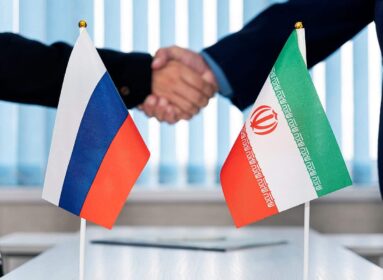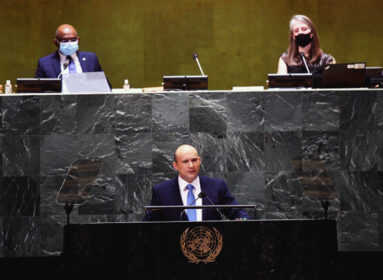
By Josefin Dolsten
6 new books about the Holocaust you should read, according to scholars
(JTA) — From Anne Frank’s diary to Elie Wiesel’s Night, books about the Holocaust remain some of the most powerful and well-known pieces of literature published in the past century. Books have the power to educate about the Shoah’s unimaginable horrors and bring to life the stories of its victims, as well as unearth hidden details about wartime crimes.
Ahead of Yom Hashoah, Holocaust Memorial Day, JTA reached out to Jewish studies scholars across the country seeking their recommendations on recently published books dealing with the Holocaust. Their picks have all been published in the past three years.
The Crime and the Silence: Confronting the Massacre of Jews in Wartime Jedwabne
(Farrar, Straus and Giroux, 2015)
By Anna Bikont
Joshua Zimmerman, professorial chair in Holocaust studies and East European Jewish history, and associate professor of history at Yeshiva University, writes:
This book, a winner of the 2015 National Jewish Book Award, was written by a Polish journalist who discovered she was Jewish in her 30s and became deeply engaged in the topic of Polish-Jewish relations. After Jan T. Gross’ controversial book Neighbors: the Destruction of the Jewish Community in Jedwabne, Poland (2000) proved that the local Poles — not the Germans — committed the massive pogrom in that town in July 1941, Bikont went to Jedwabne and its surroundings, interviewing eyewitnesses to the crime in the years 2000 to 2003, shedding new light on the intricate way the crime was concealed for 50 years after the Holocaust.
Barbara Grossman, professor of drama at Tufts University and former U.S. Holocaust Memorial Council board member, also recommended Bikont’s book. She writes:
I directed Tadeusz Słobodzianek’s “Our Class,” a play loosely based on the events in Jedwabne, at Tufts in 2012, and remain fascinated by this story of greed, treachery and cruelty, a horrific crime in which as many as 1,600 Jewish men, women and children perished. Bikont’s magnificent work of investigative journalism details her meticulous reconstruction of the massacre and its subsequent decades-long coverup. It is a sobering and compelling account of anti-Semitism, denial and isolated acts of heroism.
The Archive Thief: The Man Who Salvaged French Jewish History in the Wake of the Holocaust
(Oxford University Press, 2015)
By Lisa Moses Leff
Jonathan Sarna, professor of American Jewish history at Brandeis University, writes:
This award-winning book recounts the amazing story of Zosa Szajkowski, the scholar who rescued archives that might otherwise have been lost in the Holocaust. Szajkowski wrote numerous books and articles, but was also a known archive thief, caught red handed stealing valuable papers from the New York Public Library. Leff’s meticulous account reads like a thriller, yet conveys invaluable information concerning the fate of Jewish archives during and after the Shoah, and why removal of archives from their original home matters. Brandeis University and my late father, Bible scholar Nahum Sarna, play bit parts in this story.”
Why? Explaining the Holocaust
(W.W. Norton & Company, 2017)
By Peter Hayes
David Engel, professor of Holocaust studies and chair of Hebrew and Judaic studies at New York University, writes:
I recommend this book for a lucid, well-crafted introduction to the history of the Holocaust. Unlike most works on the Holocaust written for a general audience, which tend to emphasize how the Holocaust was carried out and experienced, Hayes’ book concentrates, as its title suggests, on helping readers to understand why the Holocaust occurred when it did, where it did, in the manner it did and with the results it produced. It offers readers a window onto how historians go about finding answers to these questions, why some answers turn out to be more compelling than others and how new evidence can change understanding.
Probing the Ethics of Holocaust Culture
(Harvard University Press, 2016)
Edited by Claudio Fogu, Wulf Kansteiner and Todd Presner
Omer Bartov, professor of European history and German studies at Brown University, writes:
This book comes out a quarter of a century after the publication of Saul Friedlander’s crucial edited volume, Probing the Limits of Representation: Nazism and the Final Solution (1992), which had challenged the conventional discourse on the mass murder of the Jews and critiqued its popular representation. The current volume attempts to grapple with the wider impact of Holocaust scholarship, fiction and representation in the intervening period. It includes fascinating essays on new modes of narrating the Shoah, the insights provided by the “spatial turn” on research and understanding of the event and the politics of exceptionality, especially the contextualization of the Holocaust within the larger framework of modern genocide. As such, it enables readers to understand both the ongoing presence of the Holocaust in our present culture and the different ways in which it has come to be understood in the early 21st century.
Islam and Nazi Germany’s War
(Belknap Press, 2014)
By David Motadel
Susannah Heschel, professor of Jewish studies at Dartmouth College, writes:
This is a major work of scholarship, examining the various ways the Nazis fostered a relationship with Muslims both before the war and especially during the war. Jeffrey Herf wrote a book a bit earlier, Nazi Propaganda for the Arab World, detailing Nazi antisemitic propaganda sent, in Arabic translation, to North African Muslims, and Motadel expands the range of influence: that Hitler understood Islam as a warrior religion that could be exploited for propaganda efforts and to serve in both the Wehrmacht and the SS. The indoctrination of Muslims with Nazi antisemitic propaganda may well have had effects lasting long past the end of the war, a topic that deserves additional attention.
They Were Like Family to Me: Stories
(Scribner, 2016)
By Helen Maryles Shankman
Jeremy Dauber, director of the Institute for Israel and Jewish Studies and professor of Yiddish at Columbia University, writes:
Writing literature about the Holocaust is many things, but it is never easy; and writing Holocaust literature in the vein of magic realism is more difficult yet. It risks taking the great horror of the 20th century and rendering it ungrounded, imaginative, even — God forbid — whimsically slight. But when a skillful writer pulls it off the fantastic casts illuminating and terrible light on the dark shadows of the history of the war against the Jews. The stories in her collection are by no means factual in all respects. But they contain unmistakable truth.
“I don’t wish anyone to ever go through what I went through”
A West Hartford Holocaust survivor recounts her experience
By Stacey Dresner
WEST HARTFORD – Sophia Aferiat recalls just a few things about her early childhood in Poland.
“I don’t remember too much. I remember sitting on my father’s lap. He had blue eyes like me and a beard and payos [sidelocks]. I remember trying to pull on one of them. He said, ‘No, zeisele, and smiled. That means sweetheart in English.”
Sophia, who turned 81 in March, is sitting quietly in her cozy West Hartford condo as she recalls that loving moment with her father. One entire wall of the condo is covered in a mural of a tropical beach. “I love the ocean,” she says with a big smile, as she prepares to talk about her childhood during the war.
Born Sophia Spiewak, she hails from Slomnicki, a town in southern Poland, just north of Krakow. Her father sold milk and her mother Chana took care of their seven children. Sophia was the second to the youngest child.
She was only three years old when the Germans invaded Poland. When the Germans began taking Jews away in trucks, Sophia’s mother grabbed Sophia and two of her sisters and escaped to a nearby field to hide. “We stayed there for a few days and we ate what was growing there,” she recalled.
Her two older brothers Avram and Vrumek, who were still at home, were shot and killed by the Nazis.
After a couple of days, Chana left Sophia’s two young sisters, Esther and Helena, in the care of a local farmer, and took Sophia with her. They later learned that the farmer put Sophia’s two sisters on a train. They never saw them again.
Sophia and her mother lived for a time in another farmer’s barn. She remembers the farmer’s mother giving her milk and bread to eat and bathing her. After a few months, Sophia and her mother ended up in the Krakow ghetto living in one room with 13 other people.
She says her mother, who looked gentile, often snuck out of the ghetto to look for food. In 1943 when the ghetto was liquidated, the two escaped and hid in an attic. But they were caught and sent to Montelupich, a labor camp near Krakow. She remembers that her mother sewed bags for potatoes and that they were given dirty watery soup to eat.
“Once a day, a piece of bread in the morning and some coffee. It wasn’t coffee, it was water made from the bread of the Germans,” she said bitterly.
She and her mother survived the war, and after they were freed from the labor camp they wandered around until a farmer took them in for a few months.
One of the things Sophia had to deal with was learning to speak and communicate with people after the war.
“I didn’t know how to talk. I was in the barn hiding from place to place, in the ghetto and camp. Who talked to me?” she says shrugging her shoulder. “There were 50 women in the room and one little child. Who talked to me?”
In 1946, she and her mother discovered through the Red Cross that Sophia’s older sister Atola had survived. Thirteen years older than Sophia, she married a gentile and decided to raise her children Catholic. While her mother stayed in Poland with her older sister, Sophia went to Israel in her early 20s.
She met Raphael Aferiat, an engineer, on a kibbutz and they were married. Their son, Daniel Hershal Aferiat, was born there in 1959.
After divorcing, Sophia and Daniel came to the United States where she settled in West Hartford. She owned her own beauty shop near West Hartford Center for many years.
Today, her son Daniel has a private psychoanalytic practice in New York City. He and his wife, Nancy, have one son, Joshua, 12, whom Sophia adores.
She is matter-of-fact when she speaks of her experiences during the war, but here and there she becomes emotional.
She says she was robbed of her childhood.
She went to Majdanek many years after the war and saw the ovens at Majdanek. She said that she cried and thought, “That could be my family.”
In 2016, Sophia had a heart attack and feared that she would not be around much longer.
As Yom Hashoah nears, she says she wants to share her story.
“I don’t wish anyone to ever go through what I went through,” she said.







 Southern New England Jewish Ledger
Southern New England Jewish Ledger
















